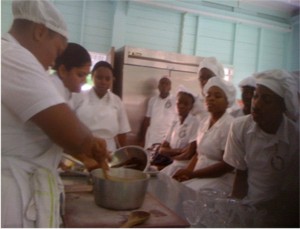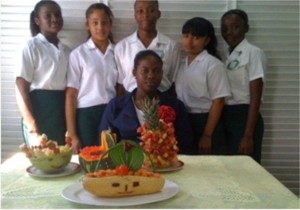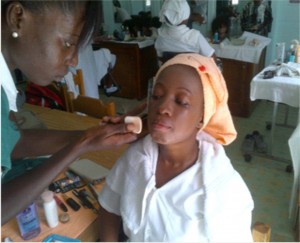A pivotal agency for human development
By Venessa Deosaran

The Carnegie School of Home Economics, formerly the Carnegie Trade School, had its genesis in 1933, when several institutions were set up to educate young women of the society. This now almost 80-year-old institution was the result of an initiative of a committee spearheaded by Major W. Bain Gray, PhD, then director of education, who believed that there should be a programme of study that included domestic courses such as needlework, cookery, laundry and housekeeping for young girls.
This recommendation saw the institution being set up to facilitate training in this regard, and funding was the responsibility of the Carnegie Board of Trustees and later the United Kingdom Trust Funds.
The first principal, British born, B. Briant, was appointed to administer over the operations of the institution, and was tasked with ensuring that the venture was a success. The government made a commitment to assume full financial responsibilities if this were realised. Thanks to her effective management and zeal, government made good on their promise and assumed full responsibility for the school in 1937.
Other principals were Blackmore and Gunn, both British born, followed by locals Lucille Fraser, Magda Pollard, Lynnette Sylvester, Aulene Kilkelly, Roxanne Benjamin – Hoppie and Norma Washington. Presently mandated with this task is Penelope Harris, whose vision is to broaden the school’s horizon by extending the facilities to the Caribbean and further afield, by having the programmes accredited.
During the period 1937 to 1958, the Carnegie Trade School, inclusive of training, made a decision to commercialise its operations by producing custom made ladies’ garments and uniforms for the government sector employees. Large scale catering was also undertaken on request.
New name
In September 1958, trading at this institution was discontinued, and a consequent name change was effected: ‘Carnegie School of Home Economics’. There were also changes to the curriculum, and subjects such as Arithmetic, English, Social Studies, Geography, Art and Craft, Home Management, Food and Nutrition and to a large extent Clothing and Textiles, were incorporated into the core curriculum.
This was aimed at giving every girl an opportunity to learn all the skills and attitudes necessary for a good home, family and community life.
Between 1957 and 1958, the Carnegie School of Home Economics also initiated a ‘Home Economics Emergency Training Programme’ for teachers. Persons were drawn from the three counties of Essequibo, Demerara and Berbice. The principal and deputy principal, Kathleen Gunn and Lucille Fraser, respectively, were the facilitators, and Cicely Phillips and Olga Britton were the tutors. This training was later extended to include persons from both public and private institutions and private citizens. However, the main target groups were students on a full-time, later part-time basis.
More emphasis on food preparation and service

In 1971, the Carnegie School of Home Economics formalised its catering service to give more specialised training in food preparation and service. The public was afforded an opportunity to receive economical and healthy meals of a high standard in a pleasing atmosphere in the training restaurant now called, ‘The Hibiscus Restaurant’. Financial and technical assistance were afforded by the Association of Canadian Community College (ACCC) and the Canadian International Development (CIDA) to enhance the programme. Carnegie has continued training in this regard as the institution strives to uphold its motto, ‘We strive for better homes’, by providing quality goods and services to all.
In September 2007, the Carnegie School of Home Economics and the Craft Production and Design Unit came under one board of governors. The Craft Production and Design Division is currently housed in what was the residence of the first principal of Carnegie. The Craft Production and Design Division was established in January 1, 1978 having evolved from the Community Development Division under the ministry of co-operatives which was headed by Desmond Hoyte as minister.
Over the years, this division was sustained by funds provided by central government. This division is now solely the responsibility of the education ministry. The main objective of the division is to promote and develop an effective and viable craft industry as a meaningful contribution to the economy.
Looking at the future
Today, the Carnegie School of Home Economics stands as the leading training institution in the catering and hospitality industry in Guyana which effectively prepares students in food preparation and service. In addition, the students receive training in Food Science, Hotel Management, Marketing and Customer Service and Front Desk Management, to name a few.
Quality is a watchword in all courses and to ensure it is kept abreast with current trends in quality assurance, membership of key institutions is a must. These include Association of Caribbean Tertiary Institutions (Guyana Chapter), the Guyana Tourism Authority Forum for Lifelong Learning, the Association of Cooperative Educators and the Tourism and Hospitality Association of Guyana. Membership in these organizations ensures that staff members are given the opportunity to be exposed to current trends in quality, accreditation, tourism development and standards in the hospitality industry.





Comments are closed.